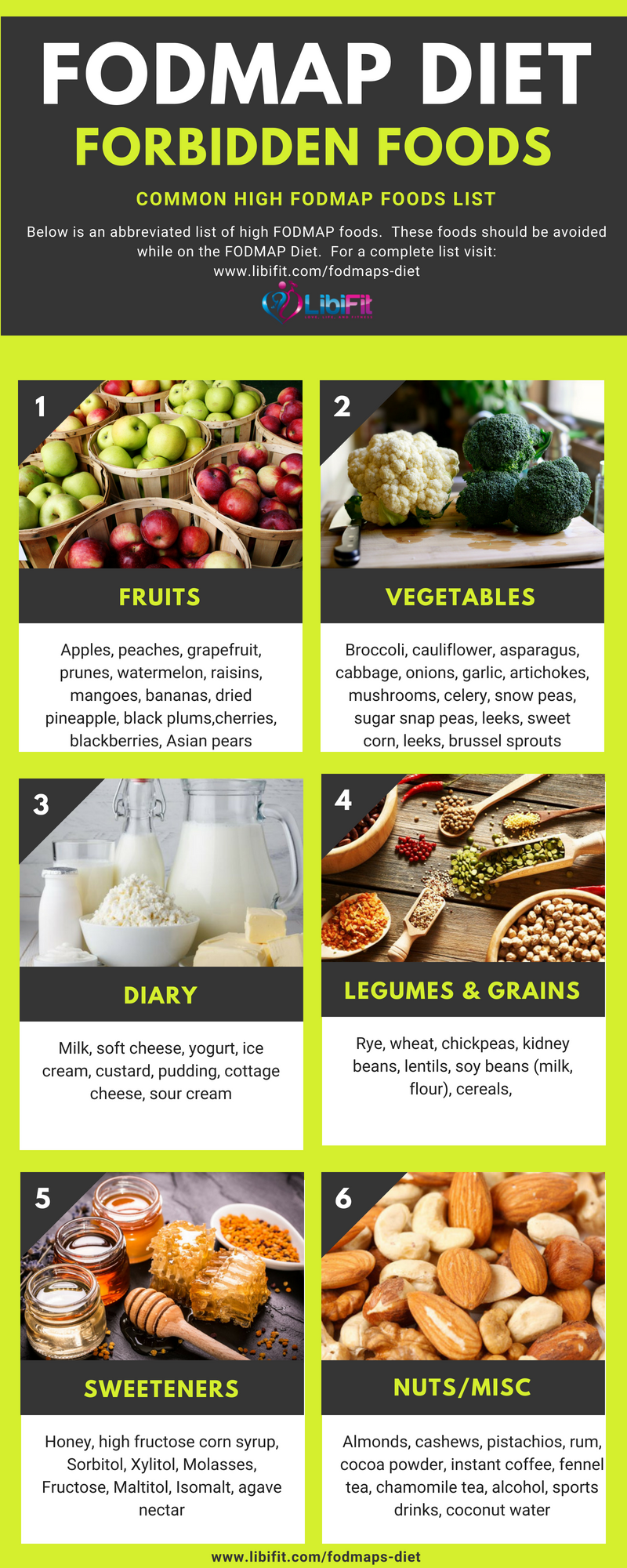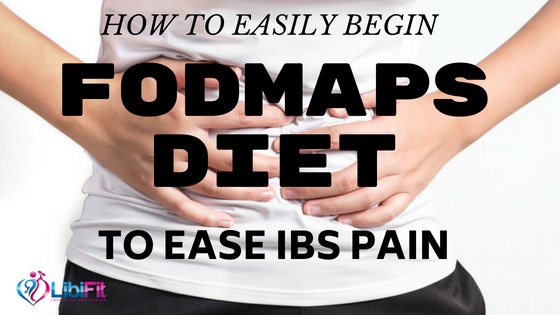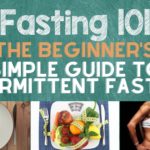Have you recently been diagnosed with IBS? Do you suffer from digestive stress, particularly after consuming certain foods? Is the discomfort making your life miserable? It is time to break up your digestive problems and try the famous FODMAP diet (FODMAPs diet), a dietary intervention that is quickly growing in popularity.
The word “FODMAP” itself may not make your mouth water, but most of you eat at least some of these items as a part of your daily diet. This is especially true for those suffering from a serious gastrointestinal issue like irritable bowel syndrome (IBS), hence, the reason why cutting them off can help treat this disease.
If you are interested in learning about the FODMAP (FODMAPs DIET) or have just started out on the FODMAP diet and feeling overwhelmed or lost, this post is solely dedicated to you.
What does FODMAPs Mean?
Let’s begin by breaking down what FODMAPs actually refers to.
FODMAP is actually an acronym that describs five different types of sugar commonly found in food items.
These sugars include fermentable oligosaccharides, disaccharides, monosaccharides, and polyols. [1]
Each of these sugars has three primary characteristics in common. These characteristics include; a rapid process of fermentation due to the presence of long-chain carbohydrates, a poor absorbance in the small intestine, and a high osmotic activity because of their small size.
These properties of the FODMAP sugars together with their similar structures can help induce a number of gastrointestinal problems like abdominal pain, bloating, gas, constipation and/or diarrhea. [2]
These basic FODMAP groups also have more than one sub-groups within them, some of which are mentioned below:
- Oligosaccharides: These sugars have two subgroups including galactans (galacto-oligosaccharides) or fructans.
- Disaccharides: Sugars belonging to this group are known as lactose and do not have any subgroups.
- Monosaccharides: Also known as fructose, this group of sugars has no subgroup.
- Polyols: Two subgroups of polyols have been identified so far- mannitol and sorbitol.

Why do FODMAP Foods Cause Stomach Issues?
Before discussing how to follow a FODMAP diet (FODMAPs Diet), it is essential to answer the most important question popping in your heads right now- how can it treat stomach problems?
Foods high in FODMAPs are harsh for your stomach. The intestines are not able to absorb them easily and draw a lot of water into the gastrointestinal system in doing so.
These foods are also thought to remain in your gut for a longer period of time. This causes most of them to undergo fermentation resulting in the extremely discomforting symptoms like gas, bloating, or diarrhea.
In layman’s terms… these sugars can make your life a living hell!
Therefore, avoiding the foods containing FODMAPs can spell relief and make your life more comfortable.
Should You Follow a Low FODMAP Diet?
While the FODMAP diet (FODMAPs diet) was originally designed to handle digestive issues, it has recently been emerging as a beneficial tool to handle several other problems.
This diet has potential benefits from those who suffer from:
- Irritable bowel syndrome
- Bacterial overgrowth in the small intestine
- Any other types of Functional Gastrointestinal Disorder (FGID
- Inflammatory bowel disease (IBD)
- Migraines that get triggered after some specific meals
- Autoimmune diseases such as multiple sclerosis, rheumatoid arthritis, and eczema
- Fibromyalgia
How to Follow a Low FODMAP Diet?
To make it easier for you, a low FODMAP diet has been broken down into three phases.
Stage I: Elimination (3-8 weeks)
As the name suggests, the elimination phase means excluding all the food items high in FODMAPs from your diet. This may be the hardest phase because you would have to cut down on your favorite ice cream or stop including a certain “forbidden fruit” in your salads.
See a list of FODMAPs diet “forbidden foods” or high FODMAP foods below.
FODMAP Diet “Forbidden Foods”
Vegetables |
Legumes |
| Sun Dried Tomatoes | Navy Beans |
| Sugar Snap Peas | Split Peas |
| Leeks | Soybeans (flour, milk) |
| Beetroot | Baked Beans |
| Onions (includes onion powder) | Black Beans |
| Garlic (includes garlic powder) | Fava Beans |
| Cabbage | Kidney Beans |
| Broccoli | Wheat and rye |
| Cauliflower | Rye |
| Snow peas | Wheat |
| Onions (includes onion powder) | Barley |
| Garlic (includes garlic powder) |
Dairy |
| Shallots | Milk (Cow, Goat, Butter, Evap, Condensed, Sheep) |
| Asparagus | Soft cheese |
| Artichokes | Yogurt |
| Celery | Ice cream |
| Sweet corn | Custard |
| Brussels sprouts | Pudding |
| Mushrooms | Cottage cheese |
Fruits |
Nuts, including cashews and pistachios |
| Apples |
Sweeteners |
| Peaches | Honey |
| Apricots | Sorbitol |
| Cherries | Isomalt |
| Blackberries | High fructose corn syrup |
| Persimmon | Agave nectar |
| Nectarines | Xylitol |
| Plums | Maltitol |
| Prunes | Mannitol |
Mangoes |
Drinks |
| Pears (any type) | Rum |
| Watermelon | Sports drinks |
| Dried fruits (raisins, figs, dates) | Coconut water |
| Herbal tea | |
| Chamomile | |
| Fennel |
As soon as you start showing signs of improvements, you will quickly be moved to the next phase.
Stage II: Reintroduction (4-8 weeks)
During this phase, you can begin to systemically reintroduce all higher FODMAP foods back into your diet.
Wait, what? Why would you start eating all those things that you had just cut out from your life?
This is because reintroduction of these foods will help determine your individual tolerance to every FODMAP subgroup.
Stage III: Personalization
Thanks to the reintroduction phase, you will have a better idea about which foods help trigger digestive issues in your body. Now all you have to do is to simply avoid eating those foods.
For most of the people, this diet does not have to be strict. They can observe dietary flexibility and eat almost all of their favorite foods while controlling their symptoms well.
Is FODMAPs Diet a Permanent Solution?
Before you mentally prepare yourself to pass through the three stages of FODMAPs diet, which can be a torture for some of you, remember that it is restrictive diet.
Yes, for some people, this may require cutting down a number of common food items. But you would have to reintroduce these foods at some point in your life so, do not consider it as a permanent solution.
FODMAPs Diet and IBS: What is the Relation?
The FODMAPs diet has been known to control or treat IBS symptoms.
IBS refers to a chronic gastrointestinal problem characterized by altered bowel habits and abdominal pain. Almost two-thirds of people suffering from IBS report how their symptoms are mostly associated with food.
Do you know that 11% percent of the global population suffers from IBS? The toll is particularly high in the United States; a whopping 20 percent. [3]
One landmark clinical study compared the 39 patients of IBS receiving standard eating advice against the 43 patients who were counseled to follow the FODMAP diet. [4]
Diet changes helped both groups but the people following the FODMAP diet experienced more improvement
Another Australian study studied the effects of a FODMAPs diet in IBS patients for 21 days, followed by a washout period. Then, an alternate diet was introduced in the patients for the next 21 days. [5]
The IBS symptoms were decreased by 50%, particularly a week after implementation of the FODMAP diet.
Other studies have report similar benefits of the FODMAP diet with a success rate of almost 68 to 76 percent. [6]
So, What About Probiotics?
Recent data has suggested a strong link between your health and the balance of your gut bacteria, also known as the gut microbiome.
Any imbalance in this bacterial community, a condition known as gut dysbiosis, can lead to many problems the most prevalent of which are gut issues.
Probiotics are the beneficial bacteria that we eat especially to restore this balance and improve digestion, health, and quality of life. Probiotics have also shown to exert a wide range of other health benefits including weight loss.
But how is this associated with FODMAPs?
Previous literature has shown that different subgroups of IBS patients tend to have irregularities in the bacterial environment of their guts. [7]
The real question posed now is can you manage FODMAP sensitivities by adding “good bacteria” from these probiotics? The research seems to be strongly in favor of it.
It has been shown that the probiotics supplements VSL#3 Align/Alflorex and Symprove are the most beneficial. If you have a predominant cause of constipation, choose probiotics with lactobacilli species in it.
You can also obtain these probiotics from whole food sources such as kefir, quark, pickled vegetables, and yogurt.
But the problem here is that many of these foods that contain probiotics are also high in FODMAPs and may not be tolerated by a lot of people. There are a lot of other problems that arise when you keep relying on these whole foods to obtain probiotics.
For example, each batch of these foods has variable concentrations of active probiotics strains. Moreover, these foods are also rich in certain chemicals like histamine and salicylates which many people are sensitive to. These problems must be considered on an individual basis.
Detecting the Common FODMAPs in Diet
Here are common groups of FODMAPs foods:
- Fructose: honey, fruits, high corn syrup
- Lactose: dairy
- Galactans: lentils, beans, and legumes such as soy
- Fructans: Onion, wheat, and garlic
- Polyols: sweeteners such as mannitol, sorbitol, xylitol, and stone fruits like cherries, apricots, avocados, peaches, nectarines, and plums
Is Gluten Included in FODMAPs?
Gluten is said to trigger many food sensitivities in certain people. Does this mean that a low FODMAP diet must be gluten-free? Not at all.
Gluten is a protein hence, it cannot be classified among other carbohydrates in FODMAPs. The Monash University in Australia has shown that gluten-free diet may appear useful to manage FODMAP sensitivities. This is because it reduces the number of oligosaccharides and fructans.
Moreover, most of the gluten-free products have low FODMAPs in it. Meaning, by choosing to follow a gluten-free diet, you can easily get rid of all or most of the digestive issues triggered by FODMAPs.
Amazing, isn’t it?
What to Eat on a Low FODMAP diet?
You are allowed to eat a number of food items in a FODMAP diet. These mostly include fruits and vegetables such as tomato, lettuce, carrot, zucchini, cucumber, orange, grapes, and mandarins.
Lactose-free yogurt and milk, hard cheese, fish, meats, olive oil, quinoa, and wheat-free pasta can also be included in the FODMAP diet plan.
Don’t forget to put the following items on your FODMAP food list.
Breakfast
Wheat-free carbs and lean proteins are still on the menu and are equally important for staying satisfied during the entire length of the day. Try poached eggs with zucchini, spinach, and tomato with wheat-free bread, or berries in lactose-free yogurt for a delicious breakfast.
Lunch
Eat plenty of vegetables while you are on a FODMAP diet. Make a delicious tuna salad with baby spinach or eat boiled eggs with white potato for lunch. You can also try green beans, olives, capsicum, lettuce, and alfalfa.
Dinner
For dinner, it is important to consume low-GI carbohydrate with a sufficient number of prebiotic fibers. However, be careful not to overdo it.
Some meal plans for dinner include quinoa with grilled fish or a stir-fried meat with boy choy and capsicum. Don’t forget to use carrots and zucchini and top it off with garlic infused olive oil with a hint of basil and coriander.
How to Follow FODMAPs Diet While Dining Out?
The meal plans and food allowances for a low FODMAPs diet may are not particularly tailored for dining out. Here are some tips to make appropriate choices while you are dining out at a restaurant on this diet:
- Café Food: Choose coffee or tea with almond or lactose-free milk. You can also try poached eggs on sourdough of low FODMAP vegetables with gluten-free bread. Fruits low in FODMAPs may also be eaten with lactose-free yogurt or in the form of a smoothie.
- Pub Food: Go for chicken, plain meat, and fish with low FODMAP vegetables, lemon juice, and olive oil. Fries with plain salt can also be added.
- Asian Food: Always go for stir-fries with no garlic or onions. You can also try sashimi, sushi, or rice paper rolls.
- Mexican Food: Ask for no beans, garlic, onions, and sour cream on tacos or corn nachos.
- Italian: Go for gluten-free pasta and get any sauce that does not contain garlic and onion. Alternatively, ask for a salad with chicken/plain meat, lemon juice, and olive oil.
- Fast Food: Eat fries with plain salt
- Cinemas: Munch on popcorn with plain water.
Should You Seek Help Professional Help?
As you may have observed, low FODMAP diet is a complex way of managing your dietary habits.
It mostly consists of generalized advice which might be difficult to follow all on your own. Getting professional guidance can, therefore, be of great help.
People all over the world are relying on group education sessions which have shown high success rates. In addition, you may want to seek advice from a dietician, doctor, or some type of structured program. This is because once you begin to reintroduce things into your diet and make modification, you will need guidance.
If you want to give the FODMAPs diet a try, Libifit is creating a 16 FODMAPs diet course to help you navigate the stages of this diet and relieve you of IBS for good. We will offer this course at a reduced introductory rate for the first 50 students. Make sure you enter your email address to be notified when the course is released to get in on it at the reduced rate. Freedom from IBS is right at your finger tips. Get it now!








































